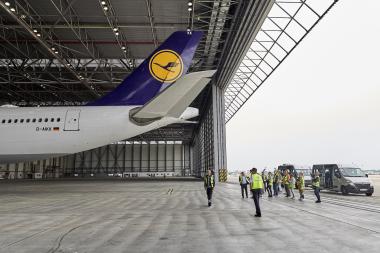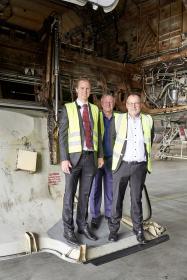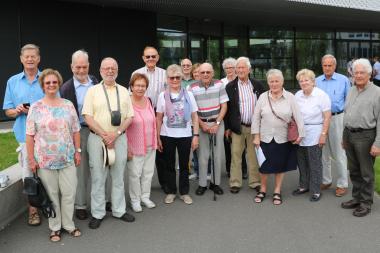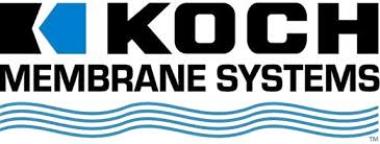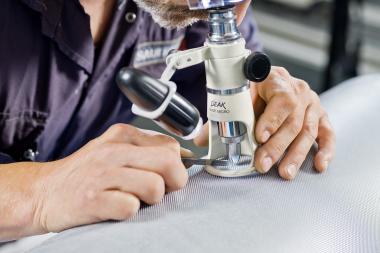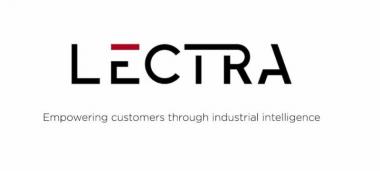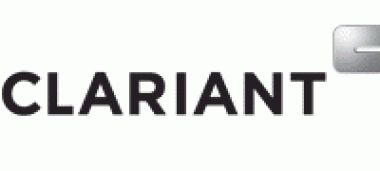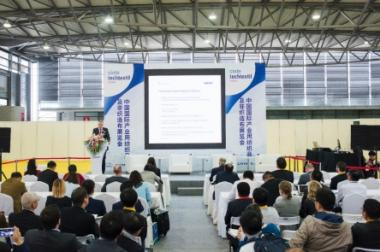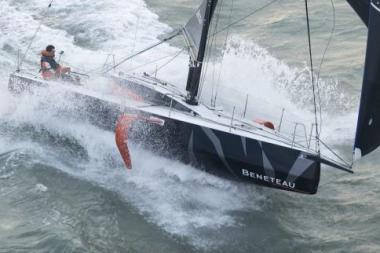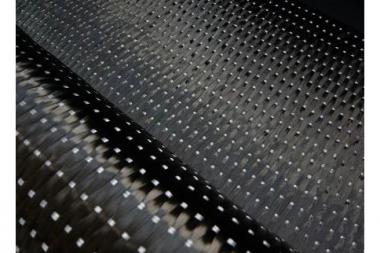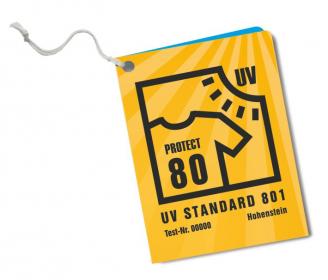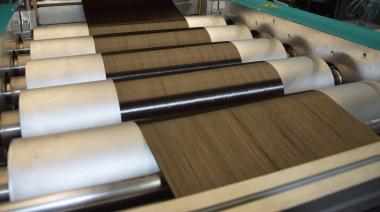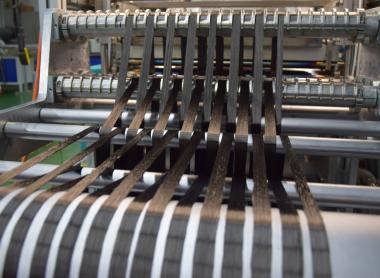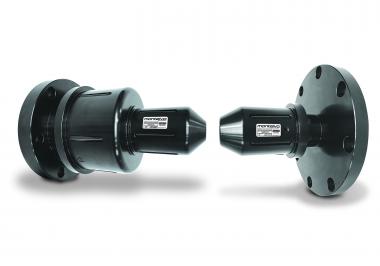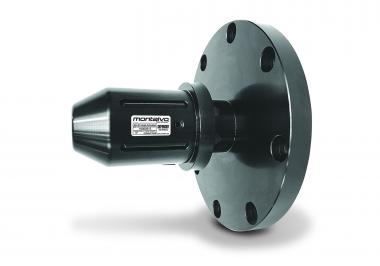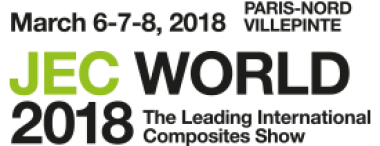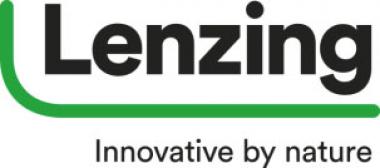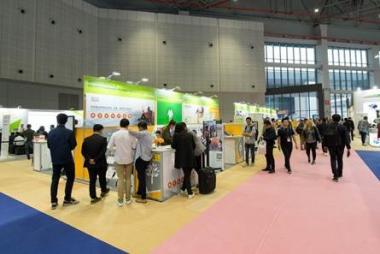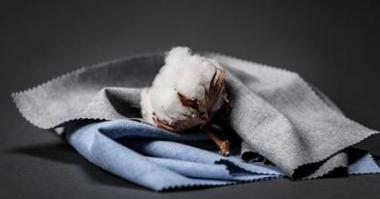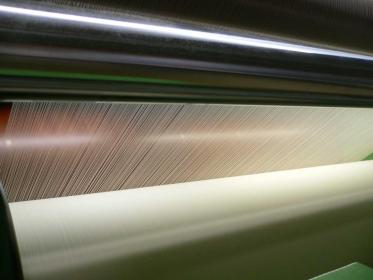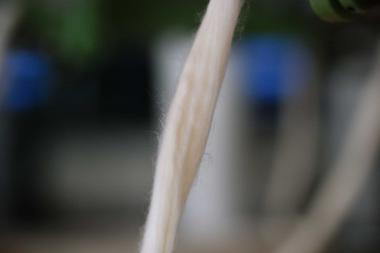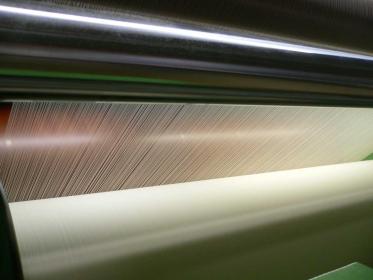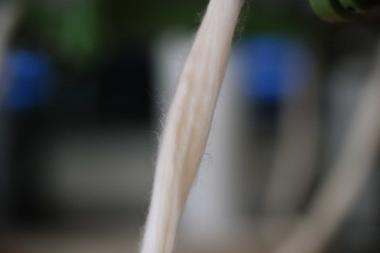Textil erobert die Luft – ZiTex NRW und Lufthansa Technik
Die „ZiTex-Textil & Mode NRW“ hatte am 12. Juni zu einem Pressetermin Düsseldorfer Flughafen eingeladen. Unter dem Motto ‚Textil erobert die Luft‘ eröffnete Detlef Braun, Leiter der ZiTex mit einem Brancheneinblick die Veranstaltung. Nach zwei informativen Vorträgen der Unternehmen ANKER und SAERTEX gab es die Gelegenheit in der Lufthansawerft die Anwendung der technischen Textilien in zwei Maschinen vom Typ A330 (Langstrecke) und A320 aus der Nähe zu begutachten.
Hightech-Textilien zum Anfassen
Bereits der erste Blick in die Wartungshalle des Hangar 7 sorgte für großes Staunen: Die imposante Lufthansa Maschine des Typus A330, die fast täglich von Düsseldorf nach New York fliegt, steht dienstags zu Wartungsarbeiten im Hangar und bot die perfekte Kulisse, sich die Hightech-Textilien einmal aus der Nähe anzuschauen. Das war sowohl für die Veranstalter als auch die Pressevertreter eine ganz neue Erfahrung. „Ich freue mich sehr, dass wir mit dieser Veranstaltung die innovative Textilindustrie so informativ, praxisnah und erlebnisreich präsentieren konnten“, sagt Detlef Braun begeistert: „Veranstaltungen wie diese tragen dazu bei, den Hightech-Charakter der Branche nachhaltig zu verdeutlichen. Textil ist Zukunft! Dies wurde am Beispiel des Flugzeugs heute mehr als deutlich.“
Ruhig & Robust – Airline Teppichböden
Für das Unternehmen ANKER, traditionsreicher Webteppichboden-Spezialist mit Sitz im rheinischen Düren, referierte Alexander von Fuchs-Nordhoff, Sales Director, über den Einsatz der Teppichböden in Flugzeugen. Zum 50. Jubiläum in diesem Jahr der ANKER Teppiche in der Luftfahrt passte das Event ganz besonders, wurde der erste ANKER Airline Teppich 1968 in einer Lufthansa Maschine verlegt. Dabei gibt es die unterschiedlichsten Varianten der Material-Beschaffung und -Verarbeitung sowie Anbringung der Teppiche. Besonders innovativ: der leichteste Teppich in einem Flugzeug überhaupt, der mit 800 Gramm pro Quadratmeter um die Hälfte leichter ist als die herkömmlichen Varianten und damit deutliche Kerosin-Einsparungen ermöglicht. Durch die Zusammenarbeit mit international renommierten Architekten und Innenarchitekten liegen ANKER Teppichböden weltweit sowohl in Flugzeugen als auch in unzähligen Bürogebäuden, Hotels und öffentlichen Gebäuden. Neben der Kreativität setzt ANKER branchenweit Maßstäbe für Nachhaltigkeit und Innovation.
Stabil & Energiesparend – Tragflächen & Strukturbauteile
Steven Bakker, Global Director Business Unit New Products & New Markets von SAERTEX, einem Familienunternehmen, das Weltmarktführer in der Herstellung von Carbongelegen ist, präsentierte deren unterschiedliche Einsatzbereiche im Flugzeug: in den Tragflächen, der Druckkalotte sowie Stringerelemente und Verkleidungsteile und erläuterte, welchen besonderen Gegebenheiten die Materialien standhalten müssen. Insbesondere die Luftfahrt setzt auf solche Composites, die durch Verstärkungsmaterialien aus Glas-, Carbon- und Aramid-Fasern an Leichtigkeit, Stabilität und Korrosionsbeständigkeit gewinnen. Als Weltneuheit konnte Saertex im März dieses Jahres auf der JEC WORLD 2018 in Paris, der Fachmesse für Verbundwerkstoffe, ein Verfahren vorstellen, das Carbon Gelege automatisch, kontinuierlich und ohne Zerstörung auf Schäden, Lücken und Krümmungen prüft. Airbus setzt dieses Verfahren zur Materialprüfung bereits in Serie ein.
Einblicke in die Praxis vermittelte die Lufthansa Technik
Im Hangar Nr. 7 der Lufthansa Technik erfuhren die Presseteilnehmer viele Details von Wartungsleiter, Sascha Bongartz. Die Lufthansa Technik Gruppe ist ein Geschäftsfeld der Deutschen Lufthansa AG rund um die Themen Wartung und Überholung von Flugzeugen, Geräteversorgung, Triebwerke, Fahrwerke und VIP-Services. Mit 50 Standorten auf der ganzen Welt und 26.700 Mitarbeiterinnen und Mitarbeitern – davon rund 11.000 in Deutschland – ist die Lufthansa Weltmarktführer im Bereich luftfahrttechnischer Dienstleistungen.
ZiTex-Textil & Mode NRW


